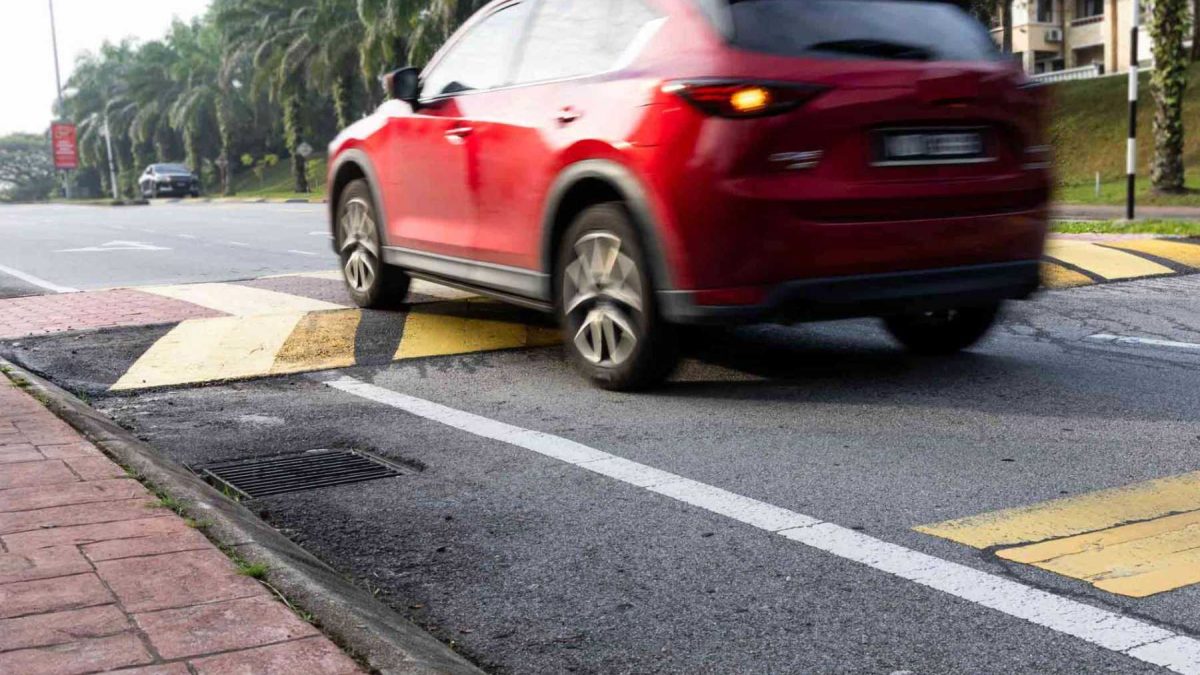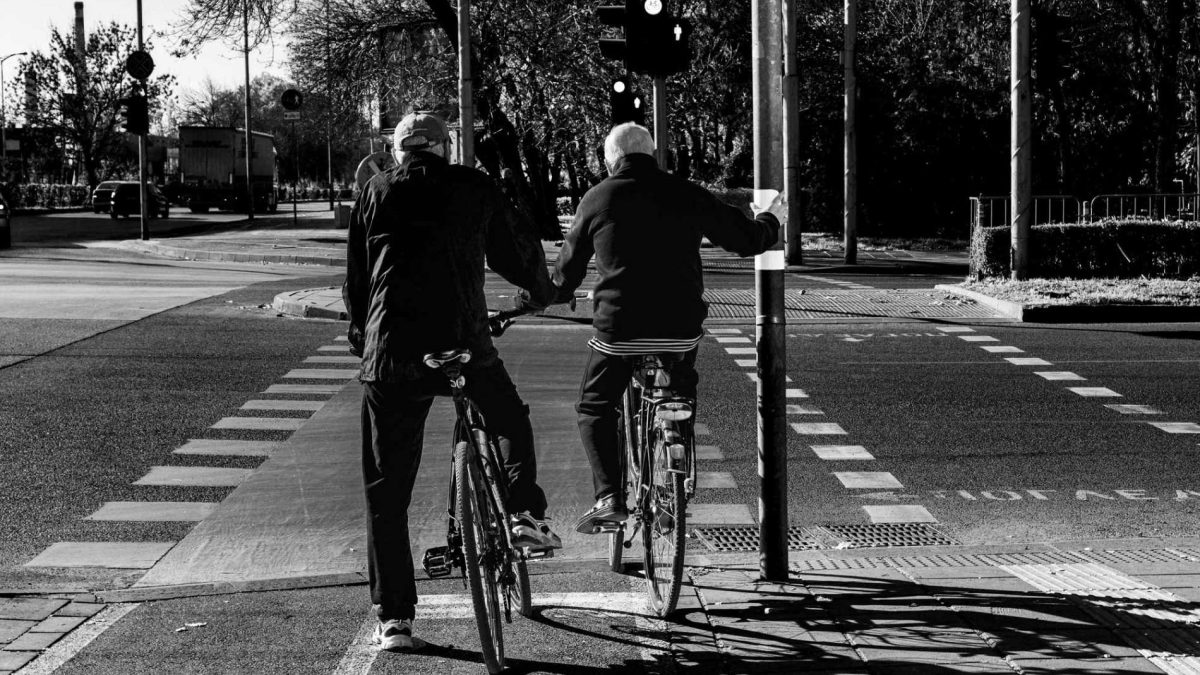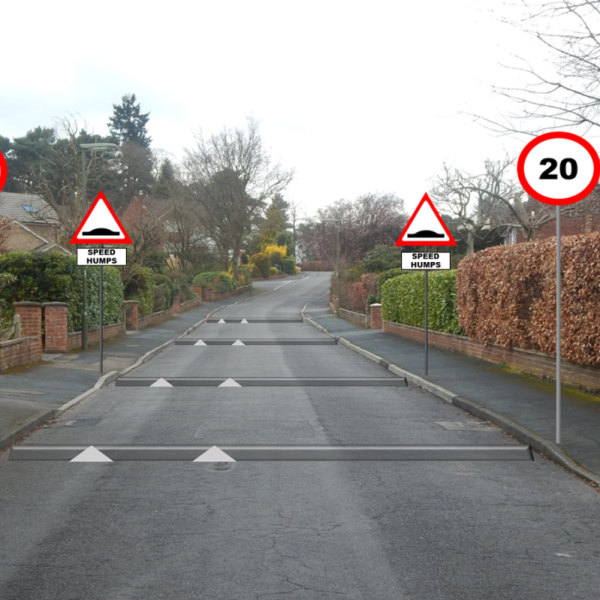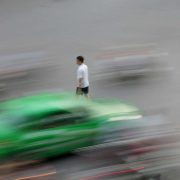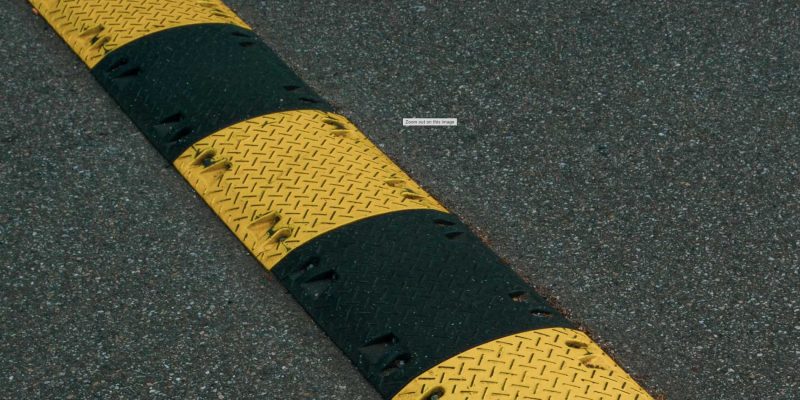
Are Bump Strips Band-Aids on a Broken Leg?
Time for a Real Solution to Traffic Design
Several of these quick fixes are now in practice. Bump Strips have been added to the list, and are now available in Europe as well as the US. There are also technologies, some already in use that include PepTalk, Traffic-Psychology, and SmartTraffic, making life-saving interventions a reality.
These technologies, along with the producer of Bump Strips, are practical, honest, and committed to making the world a better place by improving traffic safety. However, in my view, they are all band-aids on a broken leg. We should ask the following questions:
Why does traffic design that dates back to the 1960s still dominate our streets?
Why do we keep witnessing the slow, painful, and heartbreaking death of thousands of pedestrians, cyclists, and motorcyclists, day in and day out, worldwide?
What is the solution to this problem?
These questions underscore the need to reimagine the way our traffic systems function. Our present approach, which can be seen as technocratic, is outdated.
We must abandon the belief that human behavior can be controlled purely through traffic design.
Instead, we should seek solutions that enable humans to thrive in a system that supports human dignity.
Bump strips, those ubiquitous rubber or plastic mouldings on roads that slow us down. Superficially, they’re a brilliant solution to a well-known problem: speeding. But look a bit closer and you might ask yourself: is Band-Aiding a broken leg the right response? Let’s look into why traffic fixes might be far from the silver bullet we often think they are.
The Appeal of the Quick Fix
There are some obvious. They are cheap, easy to install, and – when people hit them – their impact is felt immediately. Slap a few of these on a street and, hey, presto, you’ve taken a step towards calming traffic. This is precisely where the simplicity of bump strips potentially misleads. Traffic management is a complex thing. It’s affected by multiple influences including road design, driver behavior, urban planning, and community needs.
Is a strip of rubber really a suitable answer for all of this?
The Cracks Begin to Show
The rub is that bump strips slow traffic, but they also bring with them a host of other problems. For one thing, they are hard on vehicles, potentially damaging suspensions, tyres, and undercarriages. And they create noise: every time a vehicle bumps over a strip, it makes noise, a nuisance for nearby residents.
And emergency services hate them. Bump strips can slow down ambulances, fire trucks and police cars. Every second counts in an emergency, and in the worst situations a series of bump strips can literally be the difference between life and death.
Aesthetic and Environmental Concerns
Bump strips aren’t winning any beauty pageants, either. They are an eyesore, especially in historic areas and in scenic neighbourhoods where visual appeal can be a major concern. There is also a concern over the environmental impact of producing and later disposing of plastic or rubber bump strips. In a world that is moving toward more ecologically sustainable urban living, more attention needs to be paid to the materials and lifecycle of traffic management devices.
Beyond the Band-Aid: Sustainable Solutions
So what other choices are there? Firstly, we need a new approach to traffic calming. One that deals with the causes of speeding – and sits comfortably within the general design of the urban landscape. This could include:
1. Road Design That Naturally Slows Traffic
Curved Streets and Narrow Lanes: When a road is constructed with gentle curves, or if it is narrowed at strategic points, most drivers will slow their speed without the need for a speed bump or speed strip. Physical cues such as textured pavements or other visually distinct materials provide sensory feedback to drivers that they should slow down.
Chicanes and Build-Outs: Chicanes and build-outs, which are extensions of the sidewalk, can be created at intervals to make the street more serpentine, thus slowing down drivers as they must move more carefully. Along with reducing traffic speed, this method of traffic calming shortens the distance pedestrians must cross the street.
2. Enhanced Public Transportation Options
Better, more frequent services: better reliability and service levels should mean that public transport is a more viable alternative to using a car, and so fewer cars on the road overall. This is likely to reduce traffic volumes and speeds in peak periods.
Integrated Transport Networks: Insuring that different types of public transport (bus, train, tram) are integrated more easily will lead more passengers to use public transport instead of driving cars. Improved real-time information and payment systems will also increase the public’s usage of public transport.
3. Technology-Driven Solutions
Digital Speed Signs: Installing digital signs on roads that can change speed limits depending on traffic, weather or time of day. These smart systems can manage traffic much more dynamically than static signs or physical measures, resulting in much greater improvements in road safety.
Artificial Intelligence Traffic Monitoring: Using Artificial Intelligence to analyse traffic patterns and predict the most congested areas could help traffic managers to make preemptive changes to traffic flows, such as adjusting the timing of the traffic lights or informing drivers about the best alternative routes via apps.
Adaptive traffic signals: traffic signals that change with actual traffic flows can reduce waiting times and make it easier to have a smoother flow of traffic – thus reducing the need for drivers to speed up when the lights change.
4. Community Engagement and Education
Local workshops and forums: Local workshops and forums involving residents can educate them about the dangers of speeding, and the benefits of traffic calming. This process can also collect information about residents’ preferences for traffic management, and ensure that measures are consistent with residents’ priorities.
School Programs: After the implementation of educational programs in schools that teach students about the road safety and necessity of driving carefully would make people think about it for a long time for such behavioral changes. As the pupils are the future generation of drivers, hence, it is important to interact with them to make changes in driving habits.
Public Campaigns: Public campaigns which make it clear that lower speeds are good for you as a person, and good for the community can change public opinion and behaviour, with testimonials from local figures, facts about reductions in accidents, and regular online engagement.
Bump strips might be a Band-Aid plaster over the whole issue, but they’re no cure.
For urbanists and communities alike to grapple with the traffic problems they face, they need more considered, integrated solutions than the Band-Aid approach.
The choice is ours: do we want to use Band-Aids to address the issue, or do we want to heal the fractured leg?


